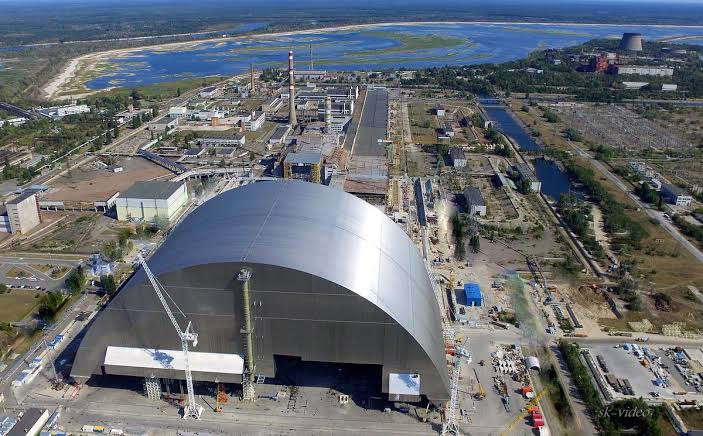Chernobyl Radiation Shield Struck By Russian Drone, Ukraine Claims.
A Russian drone has struck the protective radiation shield covering the damaged Chernobyl nuclear reactor, Ukrainian President Volodymyr Zelensky has claimed.
The overnight attack caused a fire at the site of the world’s worst nuclear disaster, though emergency crews have since extinguished the flames. According to the International Atomic Energy Agency (IAEA), radiation levels inside and outside the facility remain stable.

Russia has denied any involvement, insisting its military does not target Ukraine’s nuclear infrastructure. “Any claims that this was the case do not correspond to reality,” a Russian government statement read.
The IAEA, which monitors global nuclear safety, confirmed that emergency personnel responded swiftly to an explosion at the site, with no casualties reported. However, the agency remains on “high alert”, with Director General Rafael Mariano Grossi stressing that “there is no room for complacency.”
Chernobyl’s Protective Shield
Zelensky shared footage on social media appearing to show damage to the massive steel and concrete shield, which was constructed to prevent radioactive material from escaping over the next century. Measuring 275 metres (900 feet) wide and 108 metres (354 feet) tall, the structure cost $1.6bn (£1.3bn) to build.
Professor Jim Smith, a nuclear expert from the University of Portsmouth, acknowledged that “this is a horrendous attack on a very important structure” but downplayed the risk of radiation leakage. He explained that beneath the outer shield, a thick concrete “sarcophagus” continues to contain radioactive dust from the 1986 explosion. “A drone strike would not be strong enough to damage this protective layer,” he told the BBC.
Zelensky Condemns Russia
Zelensky condemned the attack, stating it proved that Russian President Vladimir Putin “is definitely not preparing for negotiations”, following reports that the Kremlin had signalled willingness for peace talks. He accused Russia of carrying out nightly strikes on Ukraine’s infrastructure and cities, urging the international community to “unite in holding Moscow accountable.”
Later today, Zelensky is set to meet US Vice-President JD Vance and Secretary of State Marco Rubio in Munich, where the war in Ukraine will be a key topic at a major security summit.
Rising Concerns Over Zaporizhzhia
The attack on Chernobyl follows increased military activity around Ukraine’s Zaporizhzhia Nuclear Power Plant, Europe’s largest nuclear station.
In December, Ukraine and Russia accused each other of attacking an IAEA convoy heading to Zaporizhzhia. The IAEA’s Grossi strongly condemned the assault, calling it “unacceptable” and warning that a nuclear accident “must be prevented at all costs.”
Professor Smith expressed greater concern about Zaporizhzhia than Chernobyl. “The reactors at Zaporizhzhia are currently shut down, but there is more live fuel there,” he explained. “Chernobyl is still very radioactive, but it’s not in a ‘hot state’ due to its age.”
The long-term consequences of the Chernobyl disaster remain disputed. Officially, 31 people died as an immediate result of the 1986 explosion, while a UN report in 2005 estimated that radiation exposure could eventually lead to 4,000 deaths.
As tensions escalate, global nuclear watchdogs continue to urge restraint, warning that any military action near nuclear facilities carries potentially catastrophic risks.


